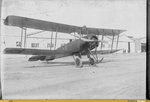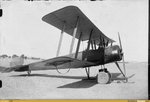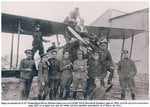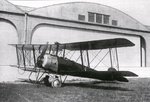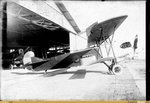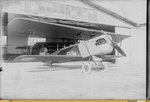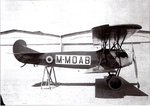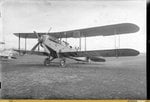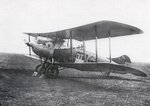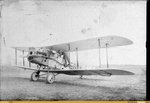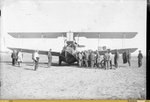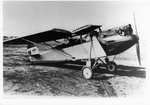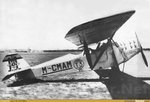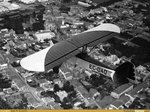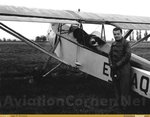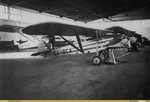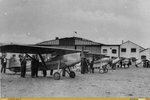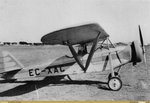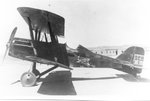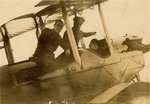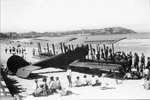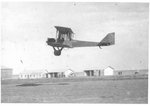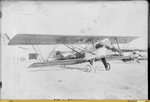On September 5, 1909, Joan Oliver, dubbed "the volaoret" an airplane took off with 200 kilos in the military land in Paterna (Valencia), managed to go 50 meters in the air and land. The unit had a cost of 20,000 pesetas. On April 2, 1910 military aviation was born in Spain by a Royal Order which decreed "the study, for the services of ballooning, aeronautics and aviation airplane type most suitable for the army and the establishment of laboratory aerodynamics." Of these aircraft will service the Corps and the blimp Spain. In March 1911 started the course for the first class of military aviation in Cuatro Vientos, near Madrid. The students belonged entirely to the Weapon Engineers and professors, other than Colonel Vives Vich, was civil. Until the third class in 1912, did not join the Navy officers, two Navy ensigns. Later, on February 28, 1913, when military aircraft already has some riders and media, was created by Royal Decree on Military Service Air Force divided the branch of ballooning and aviation. This service, which is under the command of Colonel Pedro Vives Vich, rests solely with the Minister of Defense, while still connected to the Army Corps of Engineers Section. Two months later, on April 16, 1913 approving the current emblem of the Air Force.
On November 5, 1913, (the 24th of that month according to some sources) the Spanish expeditionary squadron involved in the War of Morocco, acting for the first time in the world as a military aviation unit organized in actual conflict and carrying out the first organized bombing war in history. On this first occasion was used in this mission a unit B-1 Lohner Pfeil. On December 15, 1915 made their first seaplane flight, the military in Spain by Captain Robert Withe Santiago with a Curtiss JN-2 modified. On June 15, 1919 is a milestone for the global aviation because of the first nonstop transatlantic flight by John Alcock British and Arthur Brown flew from Newfoundland to Ireland in a Vickers Vimy biplane.
On July 21, 1921 took place the Annual Disaster and three days after loss Zeluán airfield at the hands of the Kabyle of Abd al-Krim. Spanish Aviation lost twelve aircraft (ten were burned, one down and another was an accident). The government appropriations for the purchase of aircraft and in some provinces popular subscriptions start this purpose. On November 3, 1922 Spanish Military Aviation received the Military Medal collective "work very efficient and the enemy action and cooperation with other forces in few operations were carried out from June 29, 1921." On September 8, 1925 air operations were conducted in collaboration with the French army to support the landing of Alhucemas. They involved 136 aircraft, 18 flying boats of Aeronautics Navy, of which twelve belong to the carrier Daedalus (which also has a tethered balloon and a blimp) and six seaplanes French as well as the 37 th Regiment of bombing the French supported the landing of 18,000 troops in the Bay of Alhucemas.
At the end of the decade of the 20s were completed several construction projects of new devices like the Spanish bill HACR "Pirate" Captain of Engineers Antonio Cañete Heredia, the first seaplane Spanish, which made its first flight on 17 August 1927 and the first gyro, model C-8L Juan de la Cierva, which launched on December 18, 1928. In 1933 he created the General Directorate of Aeronautics, an agency that is responsible for all technical, administrative and training both military aircraft and the civil.Durante the early years of the Republic the organizational structure remains intact. The aviation body was divided into two branches: Military Aviation, under the Army, and Naval Aviation, which provided support work for the Navy. In any case, the Spanish Aviation weapon needed in the mid-30's an urgent upgrading. There were plans to replace the Nieuport-Delage Ni D-52 on the Hawker Fury and XIX Breguet bombers by Martin 199 (B-10), but were suspended with the outbreak of the Civil War. Military Aviation was divided into three teams based in Madrid, Seville and Barcelona, a group under the name African Air Force bases scattered with several Spanish protectorate of Morocco and some squadrons of instruction based primarily on Four Winds and Los Alcazares. Naval Aviation (since 1933, Naval Aviation) was divided into four specialized torpedo squadrons, combat and training, reconnaissance and bombing.
On November 5, 1913, (the 24th of that month according to some sources) the Spanish expeditionary squadron involved in the War of Morocco, acting for the first time in the world as a military aviation unit organized in actual conflict and carrying out the first organized bombing war in history. On this first occasion was used in this mission a unit B-1 Lohner Pfeil. On December 15, 1915 made their first seaplane flight, the military in Spain by Captain Robert Withe Santiago with a Curtiss JN-2 modified. On June 15, 1919 is a milestone for the global aviation because of the first nonstop transatlantic flight by John Alcock British and Arthur Brown flew from Newfoundland to Ireland in a Vickers Vimy biplane.
On July 21, 1921 took place the Annual Disaster and three days after loss Zeluán airfield at the hands of the Kabyle of Abd al-Krim. Spanish Aviation lost twelve aircraft (ten were burned, one down and another was an accident). The government appropriations for the purchase of aircraft and in some provinces popular subscriptions start this purpose. On November 3, 1922 Spanish Military Aviation received the Military Medal collective "work very efficient and the enemy action and cooperation with other forces in few operations were carried out from June 29, 1921." On September 8, 1925 air operations were conducted in collaboration with the French army to support the landing of Alhucemas. They involved 136 aircraft, 18 flying boats of Aeronautics Navy, of which twelve belong to the carrier Daedalus (which also has a tethered balloon and a blimp) and six seaplanes French as well as the 37 th Regiment of bombing the French supported the landing of 18,000 troops in the Bay of Alhucemas.
At the end of the decade of the 20s were completed several construction projects of new devices like the Spanish bill HACR "Pirate" Captain of Engineers Antonio Cañete Heredia, the first seaplane Spanish, which made its first flight on 17 August 1927 and the first gyro, model C-8L Juan de la Cierva, which launched on December 18, 1928. In 1933 he created the General Directorate of Aeronautics, an agency that is responsible for all technical, administrative and training both military aircraft and the civil.Durante the early years of the Republic the organizational structure remains intact. The aviation body was divided into two branches: Military Aviation, under the Army, and Naval Aviation, which provided support work for the Navy. In any case, the Spanish Aviation weapon needed in the mid-30's an urgent upgrading. There were plans to replace the Nieuport-Delage Ni D-52 on the Hawker Fury and XIX Breguet bombers by Martin 199 (B-10), but were suspended with the outbreak of the Civil War. Military Aviation was divided into three teams based in Madrid, Seville and Barcelona, a group under the name African Air Force bases scattered with several Spanish protectorate of Morocco and some squadrons of instruction based primarily on Four Winds and Los Alcazares. Naval Aviation (since 1933, Naval Aviation) was divided into four specialized torpedo squadrons, combat and training, reconnaissance and bombing.

